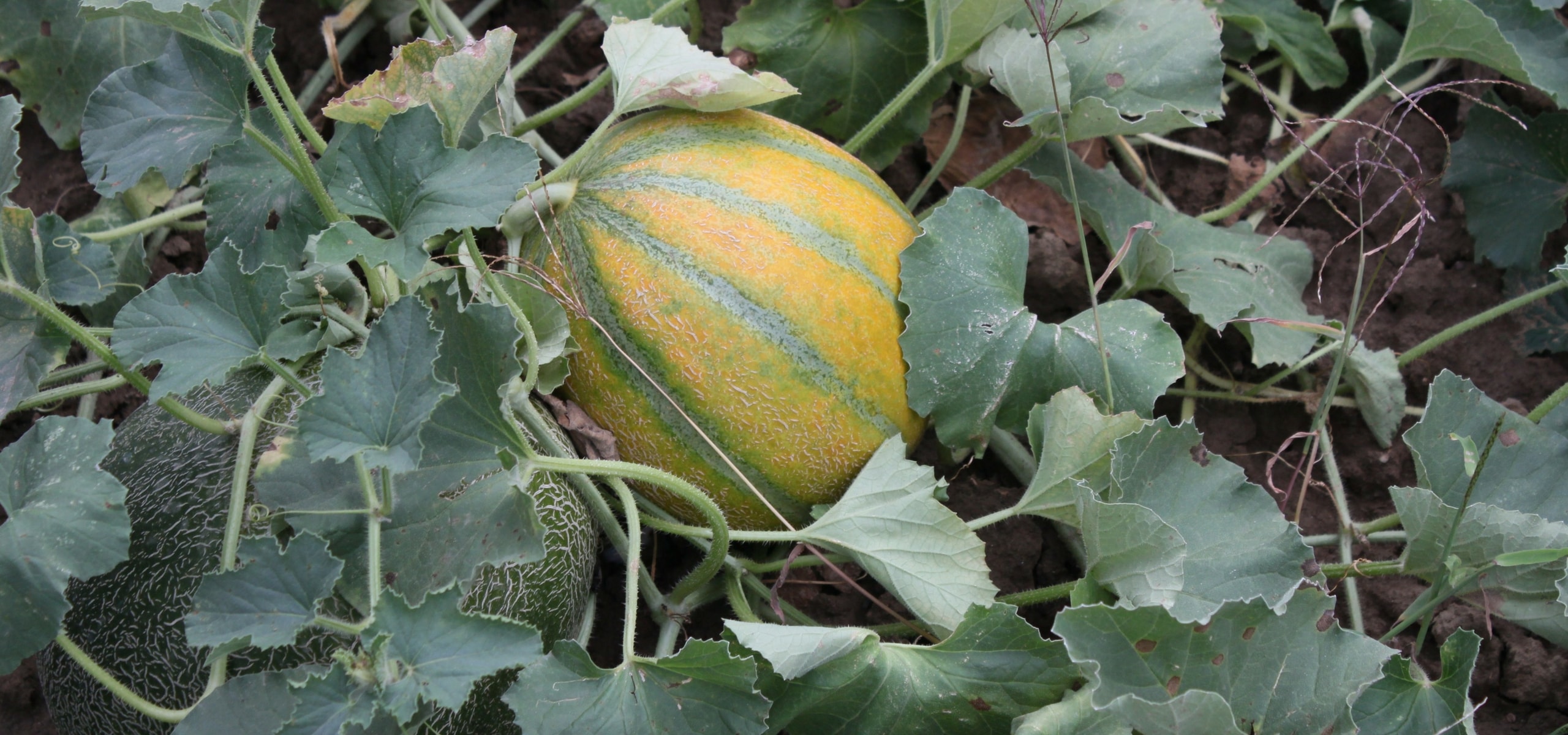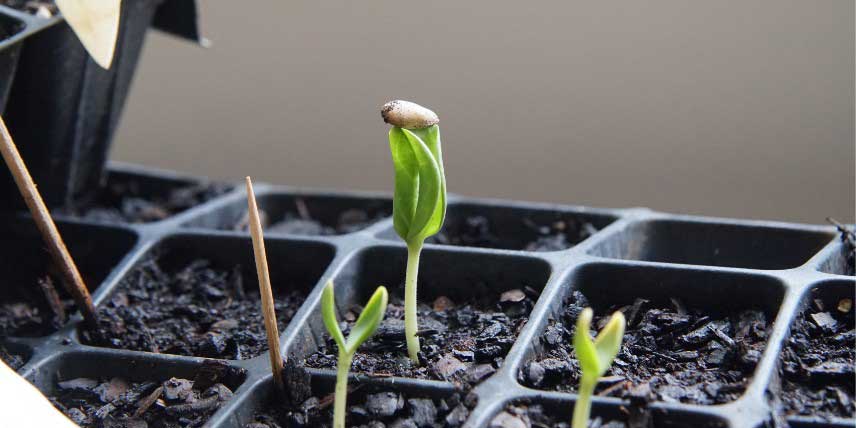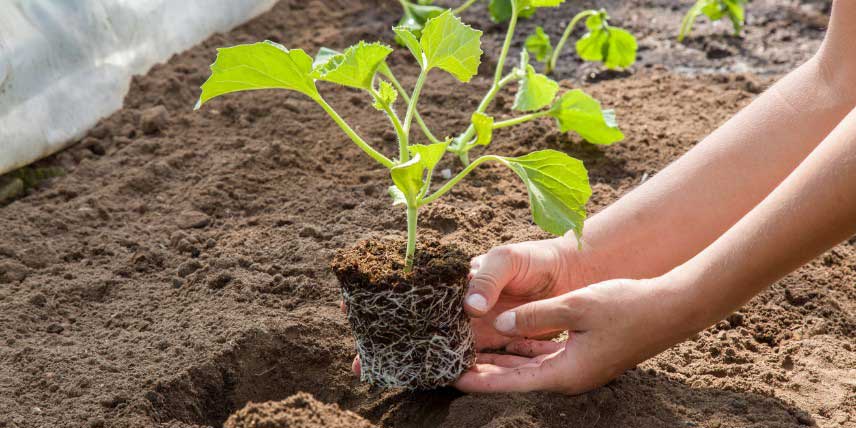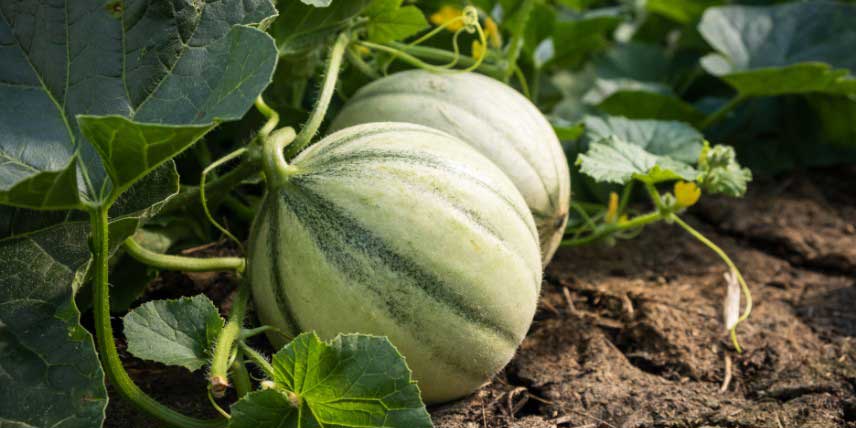
Succeeding in melon cultivation
From sowing to harvest
Contents
The melon is a fruit-vegetable appreciated for its fragrant and sweet flavour. It belongs to the Cucurbitaceae family, like squashes, cucumbers, and courgettes. It forms long creeping stems. It requires some care to harvest tasty fruits, particularly refreshing in summer, which can be enjoyed as a starter or dessert. It also has the advantage of being rich in vitamins B and C, as well as trace elements. However, it is a demanding fruit-vegetable that is not easy to grow. Discover all our tips for successfully sowing, planting, maintaining, and harvesting melons!
Where to grow melon?
Melon is a demanding plant. Its cultivation requires light soil rich in organic matter. It is planted in well manured soil, previously enriched with at least 3 kg of compost per square metre. It also needs a warm and very sunny exposure to bear fruit and will appreciate being sheltered from cold winds.
Read also
Sow in warmth or on a hotbedWhen and how to sow melon?
Sowing is generally carried out in a heated shelter, usually in April. Here’s how to sow melons in pots or buckets:
- Fill pots with special sowing compost.
- Sow 2 to 3 melon seeds per pot.
- Cover them with compost: they should be buried about 1 cm deep.
- Lightly firm down.
- Water gently using a watering can with a rose or a sprayer.
Continue to water regularly to keep the compost slightly moist until germination.
As soon as the plants show their first true leaves (after the cotyledons, the primitive leaves), transplant them into individual pots to give them space to develop.
It is also possible to sow melon seeds directly in the ground, particularly in the southern regions of France. In this case, after preparing the soil, sow them in clusters of 2 to 3 seeds, spaced 75 cm to 1 m apart, then cover them with soil and water. Thin out as soon as the plants have their first true leaves.

When and how to plant it?
Plant young plants in the garden from mid-May, at the earliest, as soon as the soil is warm enough and there is no longer a risk of frost. In cool climates, it is advisable to choose hardy and resistant varieties (such as ‘Diabolo F1’ or ‘Petit gris de Rennes’), or to shelter the young plants under a plastic tunnel at the beginning of the growing season.
- Start by loosening the soil and enriching it with well-decomposed compost.
- Dig a planting hole.
- Remove the young plant from its pot and plant it, ensuring that the collar is not buried.
- Lightly firm the soil around it.
- You may create a small watering basin around the young plant (optional).
- Water generously.
Continue to water regularly to ensure the establishment of your young plants, and remember to protect them from slugs and snails.

How to care for young melon plants?
We advise you to carry out regular hoeing and cultivating. Melons require regular but moderate watering, especially towards the end of the growing season. These operations can be spaced out or significantly reduced if you mulch the soil. To protect them from moisture, consider placing a slate or tile under each fruit.
Why and how to prune?
Pruning melon plants not only advances the harvest but also results in larger and better-tasting fruits. This pruning is reduced to step 4 for hybrid varieties, but it remains essential for Charentais melons (Cantaloupe) as well as older varieties, particularly in cool climates. Furthermore, pruning melon plants helps limit their growth and, consequently, the occurrence of powdery mildew, which is common in confined situations.
Pruning melons is carried out in several stages, as the plant grows:
- When the plant has reached four true leaves (not counting the cotyledons), pinch above the first two leaves to encourage branching. This will give you two main branches.
- When these two branches have at least three leaves, pinch a second time above the third leaf for each branch.
- Repeat the operation following the same principle on the new branches above the third leaf.
- When the first fruits develop, pinch one leaf above the fruit so that the sap benefits the fruit rather than being used to produce new shoots. It is advisable to keep only 5 to 7 fruits maximum per plant.

When to harvest melons?
Melons are harvested 4 to 5 months after sowing, between July and September. They are ready to be harvested when they emit a fragrance and when their peduncle is about to detach.
- Subscribe!
- Contents






























